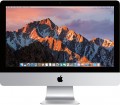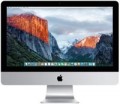Model
The specific model of the processor installed in the PC, or rather, its index within its series (see "Processor"). The full model name consists of the series name and this index — for example, Intel Core i3 3220; knowing this name, you can find detailed information about the processor (characteristics, reviews, etc.) and determine how suitable it is for your purposes.
Threads
The number of threads supported by the bundled PC processor.
A thread in this case is a sequence of instructions executed by the kernel. Initially, each individual core is able to work with only one such sequence. However, among modern CPUs, more and more often there are models in which the number of threads is twice the number of cores. This means that the processor uses multi-threading technology, and each core works with two instruction sequences: when pauses occur in one thread, the core switches to another, and vice versa. This allows you to significantly increase performance without increasing the clock frequency and heat dissipation, however, such CPUs are also more expensive than single-threaded counterparts.
Speed
Clock speed of the CPU installed in the PC.
In theory, higher clock speeds have a positive effect on performance because they allow the CPU to perform more operations per unit of time. However, this indicator is rather weakly related to real productivity. The fact is that the actual capabilities of the CPU strongly depend on a number of other factors - the overall architecture, cache size, number of cores, support for special instructions, etc. As a result, you can compare by this indicator only chips from the same or similar series (see “CPU”), and ideally, also from the same generation. And that's pretty approximate.
TurboBoost / TurboCore
Processor clock speed when running in TurboBoost or TurboCore mode.
Turbo Boost technology is used in Intel processors, Turbo Core — AMD. The essence of this technology is the same both there and there: if some of the cores work under high load, and some are idle, then some tasks are transferred from more loaded cores to less loaded ones, which improves performance. This usually increases the clock frequency of the processor; this value is indicated in this paragraph. See above for more information on clock speed in general.
Passmark CPU Mark
The result shown by the PC processor in the test (benchmark) Passmark CPU Mark.
Passmark CPU Mark is a comprehensive test that allows you to evaluate CPU performance in various modes and with a different number of processed threads. The results are displayed in points; the more points, the higher the overall performance of the processor. For comparison: as of 2020, in low-cost solutions, the results are measured in hundreds of points, in mid-range models they range from 800 – 900 to more than 6,000 points, and individual top-end chips are capable of showing 40,000 points or more.
Geekbench 4
The result shown by the PC processor in the test (benchmark) Geekbench 4.
Geekbench 4 is a comprehensive cross-platform test that allows, among other things, to determine the efficiency of the processor in various modes. At the same time, according to the developers, the verification modes are as close as possible to various real tasks that the processor has to solve. The result is indicated in points: the more points — the more powerful the CPU, while the difference in numbers corresponds to the actual difference in performance ("twice the result — twice the power").
Note that the benchmark in Geekbench 4 is the Intel Core i7-6600U processor with a clock frequency of 2.6 GHz. Its power is estimated at 4000 points, and the performance of other tested CPUs is already compared with it.
Cinebench R15
The result shown by the PC processor in the test (benchmark) Cinebench R15.
Cinebench is a test designed to test the capabilities of the processor and graphics card. The creator of this benchmark, Maxon, is also known as the developer of the Cinema 4D 3D editor; this determined the features of testing. So, in addition to purely mathematical tasks, when using Cinebench R15, the processor is loaded with processing high-quality three-dimensional graphics. Another interesting feature is the extensive support for multithreading — the test allows you to fully check the power of chips that process up to 256 threads at a time.
Traditionally, for CPU benchmarks, the test results are indicated in points (more precisely, points — PTS). The more points scored by the CPU, the higher its performance.
Memory type
The type of RAM used in the computer. This indicator describes both the general level of "RAM" and the possibilities for replacing and upgrading it: different types of RAM are not compatible with each other.
Here are the types of memory that are relevant for modern PCs:
—
DDR3. The third generation of RAM with the so-called double data transfer. Some time ago, this standard was the most popular in computer technology, but now it is increasingly losing ground to newer and more advanced standards, primarily DDR4. In compact computers, there is a "mobile", energy-saving version of this memory standard — LPDDR3.
—
DDR3L. A modification of DDR3 memory that supports operation at a reduced voltage — 1.35 V instead of 1.5 V (Low Voltage — hence the index L). Lower voltage improves performance. These modules are compatible with classic DDR3 slots.
—
DDR4. Further, after DDR3, the development of the DDR standard, released in 2014. It features both increased performance and increased volumes — the capacity of one bar can be from 2 to 128 GB. Thus, the maximum amount of RAM in most PCs is limited more by the capabilities of the motherboard than by the characteristics of existing brackets. DDR4 is very popular in modern computer technology, including desktop PCs.
Speed
The clock speed of the RAM that comes with the PC. This is one of the parameters that determine the capabilities of RAM: with the same amount and type of memory (see above), a higher clock frequency will mean faster performance. However such details are rarely required by an ordinary user, but they are important for enthusiasts and professionals.
Also note that this indicator can be used to determine the possibilities for upgrading the system: the motherboard will be able to work normally with brackets that have the same or lower clock frequency, but compatibility with faster memory should be specified separately.

